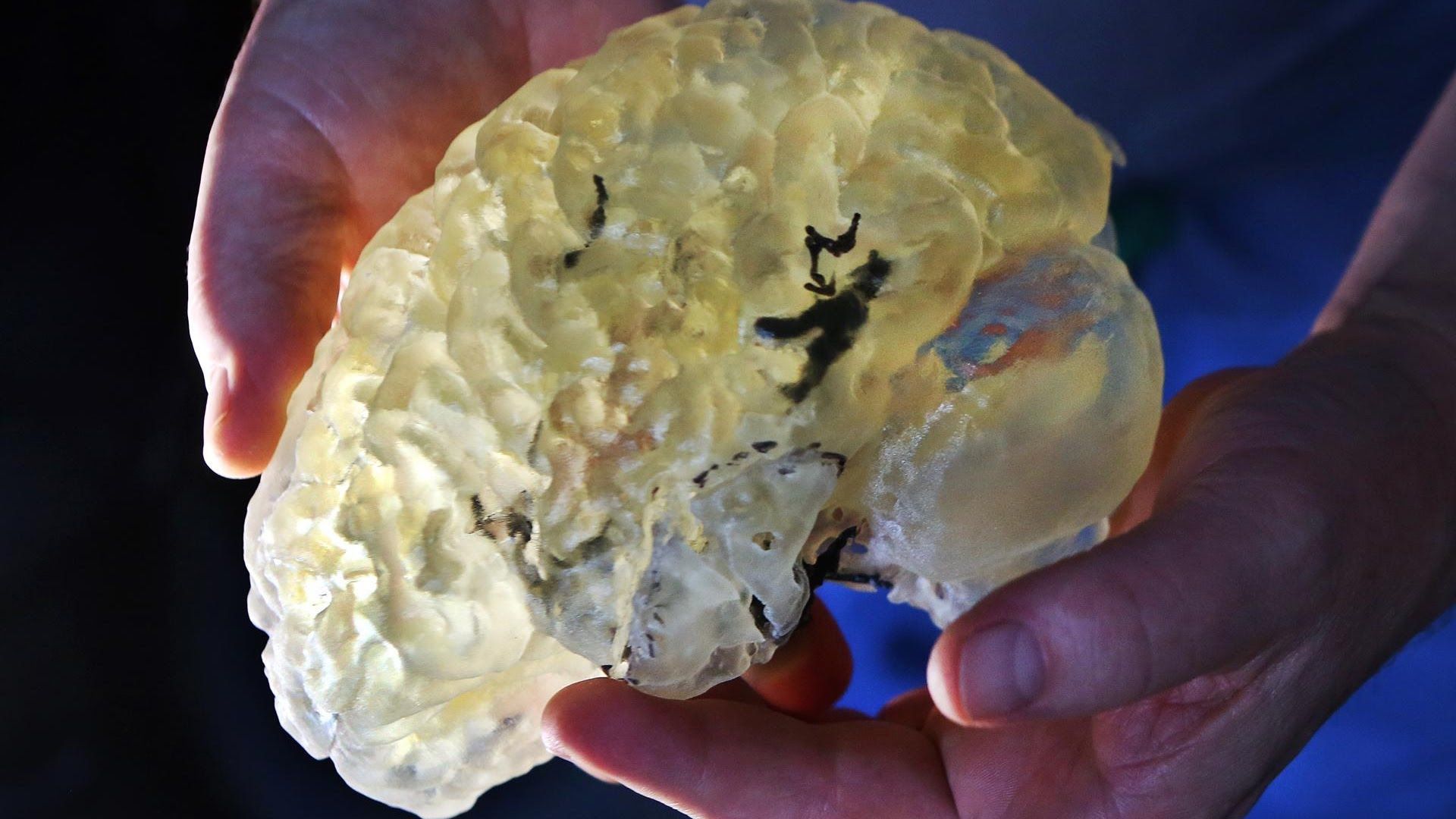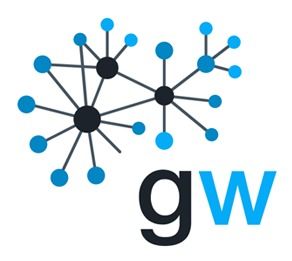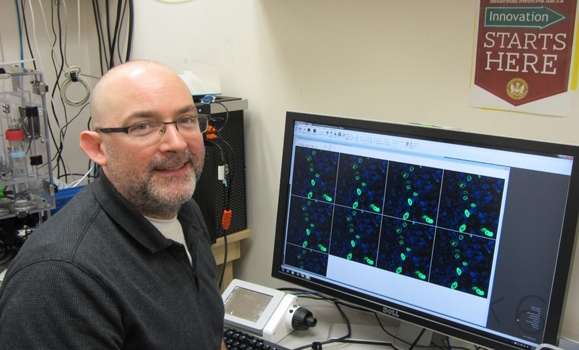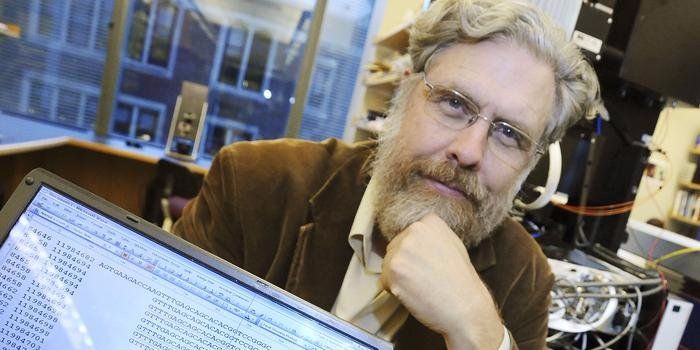Archive for the ‘biotech/medical’ category: Page 2641
Mar 4, 2016
Genome of Virulent Fungus Missing Parts of RNAi Pathways Present in Related Species
Posted by Karen Hurst in category: biotech/medical
Finding the missing link in RNAi Pathways.
By comparing Cryptococcus genomes, Duke researchers found that C. deuterogattii lacks certain RNAi pathway genes, possibly contributing to its high virulence.
Mar 4, 2016
Researcher develops technique for enhancing gene therapy
Posted by Shailesh Prasad in categories: biotech/medical, genetics, neuroscience
Using his knowledge of how genes are organized and repaired in human cells, Dr. Graham Dellaire, Dalhousie Medical School’s Cameron Research Scientist in Cancer Biology, has developed a technique that could make gene therapy more effective and safer to use. His work was recently published in Nucleic Acids Research and Nature.
CRISPR, named 2015’s breakthrough discovery of the year, stands for “Clustered Regularly-Interspaced Short Palindromic Repeats.” It can accurately target and edit DNA, offering the potential to cure genetic diseases and find new treatments for cancer.
To apply CRISPR in non-dividing cells—such as those in muscle and brain tissue—researchers must first make them behave like cells that divide. They do this by turning on a cellular process called homologous recombination, which protects DNA; the recombination allows a cell’s genes to be manipulated and rearranged without the possibility of causing more harm than good.
Mar 3, 2016
This genetics company claims it just achieved a major milestone in biology — and it could transform personalized medicine
Posted by Aleksandar Vukovic in categories: biotech/medical, genetics
Veritas Genetics, a Boston-based biotech company co-founded by Harvard geneticist George Church, is claiming it can now sequence your entire genome — the genetic blueprint inside all your cells that makes you who and what you are — for less than $1,000. That price tag includes an interpretation of the results and genetic counseling.
If the claim is true, it would shatter a long-held barrier in genetic medicine.
Reaching the $1,000 genome
Mar 3, 2016
3D-Printed Brain Tissue a Success
Posted by Shailesh Prasad in categories: 3D printing, biotech/medical, neuroscience

https://www.youtube.com/watch?v=ySPvBbfY2Fc
A 3D-printed layered structure that incorporates neural cells to mimic the structure of brain tissue has been created by researchers at the ARC Centre of Excellence for Electromaterials Science (ACES) in Australia, and it could have major consequences in studying and treating conditions such as schizophrenia and Alzheimer’s. The three-dimensional structure will allow scientists to better understand the complex nature of the brain and its 86 billion nerve cells. We look at the benefits and risks of this scientific breakthrough on the Lip News with Jose Marcelino Ortiz and Jo Ankier.
http://motherboard.vice.com/read/researchers-are-getting-clo…ing-brains
Mar 2, 2016
The nanolight revolution is coming
Posted by Karen Hurst in categories: biotech/medical, particle physics
P-Dots v. Q-Dots;
Virus-sized particles that fluoresce in every colour could revolutionize applications from television displays to cancer treatment.
Mar 2, 2016
Artificial Intelligence Risk — 12 Researchers Weigh in on the Danger’s of Smarter Machines
Posted by Karen Hurst in categories: biotech/medical, economics, mobile phones, robotics/AI, security
A realistic article on AI — especially around AI being manipulated by others for their own gain which I have also identified as the real risks with AI.
Artificial intelligence (AI), once the seeming red-headed stepchild of the scientific community, has come a long way in the past two decades. Most of us have reconciled with the fact that we can’t live without our smartphones and Siri, and AI’s seemingly omnipotent nature has infiltrated the nearest and farthest corners of our lives, from robo-advisors on Wall Street and crime-spotting security cameras, to big data analysis by Google’s BigQuery and Watson’s entry into diagnostics in the medical field.
In many unforeseen ways, AI is helping to improve and make our lives more efficient, though the reverse degeneration of human economic and cultural structures is also a potential reality. The Future of Life Institute’s tagline sums it up in succinct fashion: “Technology is giving life the potential to flourish like never before…or to self-destruct.” Humans are the creators, but will we always have control of our revolutionary inventions?
To much of the general public, AI is AI is AI, but this is only part truth. Today, there are two primary strands of AI development — ANI (Artificial Narrow Intelligence) and AGI (Artificial General Intelligence). ANI is often termed “weak AI” and is “the expert” of the pair, using its intelligence to perform specific functions. Most of the technology with which we surround ourselves (including Siri) falls into the ANI bucket. AGI is the next generation of ANI, and it’s the type of AI behind dreams of building a machine that achieves human levels of consciousness.
Mar 2, 2016
Never Say Die – SELF/LESS from Science-Fiction to –Fact
Posted by Shailesh Prasad in categories: biotech/medical, cyborgs, ethics, health, life extension, neuroscience, robotics/AI, transhumanism

In SELF/LESS, a dying old man (Academy Award winner Ben Kingsley) transfers his consciousness to the body of a healthy young man (Ryan Reynolds). If you’re into immortality, that’s pretty good product packaging, no?
But this thought-provoking psychological thriller also raises fundamental and felicitous ethical questions about extending life beyond its natural boundaries. Postulating the moral and ethical issues that surround mortality have long been defining characteristics of many notable stories within the sci-fi genre. In fact, the Mary Shelley’s age-old novel, Frankenstein, while having little to no direct plot overlaps [with SELF/LESS], it is considered by many to be among the first examples of the science fiction genre.
Continue reading “Never Say Die – SELF/LESS from Science-Fiction to -Fact” »
Mar 1, 2016
Scientists aim to harness power of body’s electrical impulses to treat patients
Posted by Karen Hurst in categories: biotech/medical, chemistry
I am so glad to see this finally. Researchers aim to turn our electrical impulses into a mainstay of medical treatment through bioelectronics, or electroceuticals. I have study the neurological sensory patterns for over a decade as side research to help myself understand sensory patterns of the brain as well as how the brain repairs cells, injuries, and other conditions as well as it’s involvement with cancer, etc. I do love this.
We finally may see a day when chemical/ artificial meds are no longer needed to treat many conditions.
Until now the pharmaceutical industry has been based on chemistry and biology. Patients are treated with drugs that work through biochemical interactions with the body’s molecular pathways. Now GlaxoSmithKline, the UK pharmaceutical company, is.
Continue reading “Scientists aim to harness power of body’s electrical impulses to treat patients” »
Sounds like new options to be considered around Polyhistidine Tagging.
Among bioprocessors, attitudes toward affinity purification range from a desire to move beyond old specificity/yield trade-offs to a willingness to explore new polyhistidine technology spin-offs, including systems for real-time detection.















